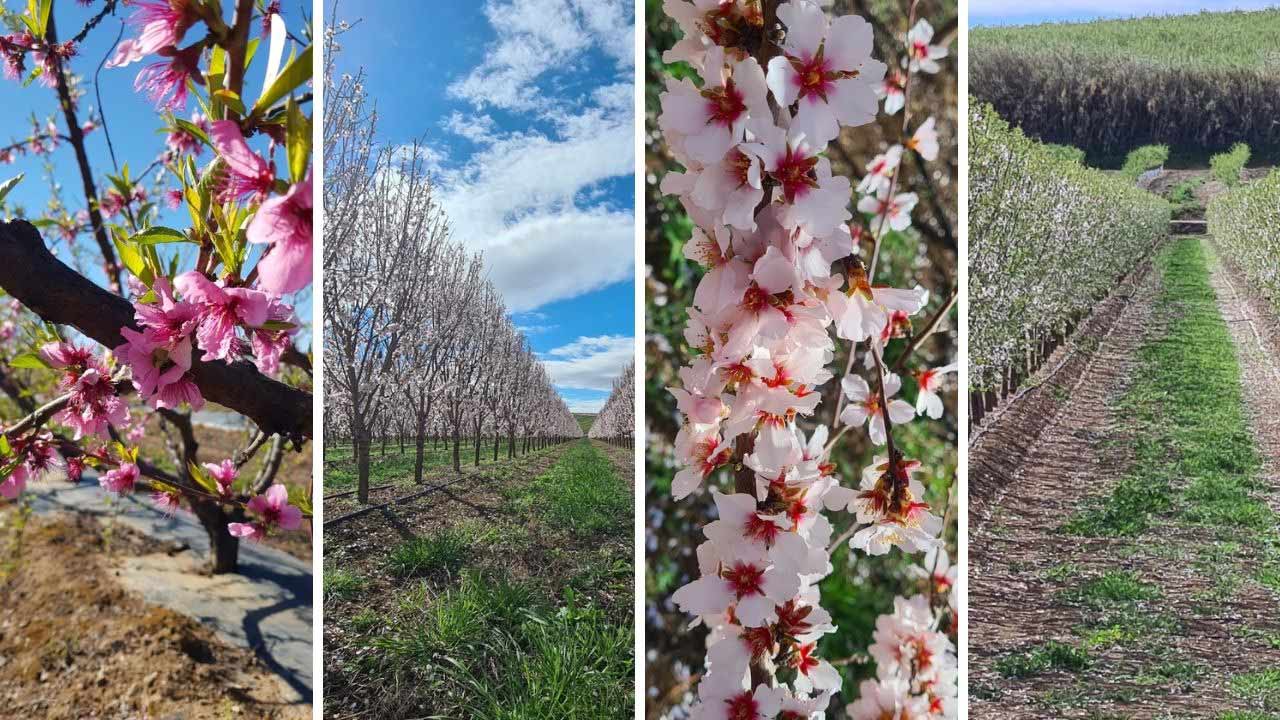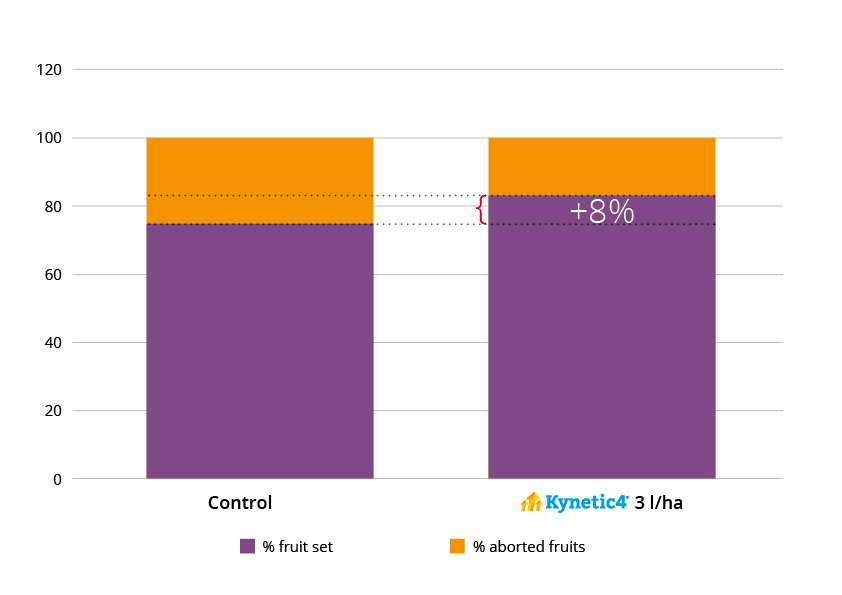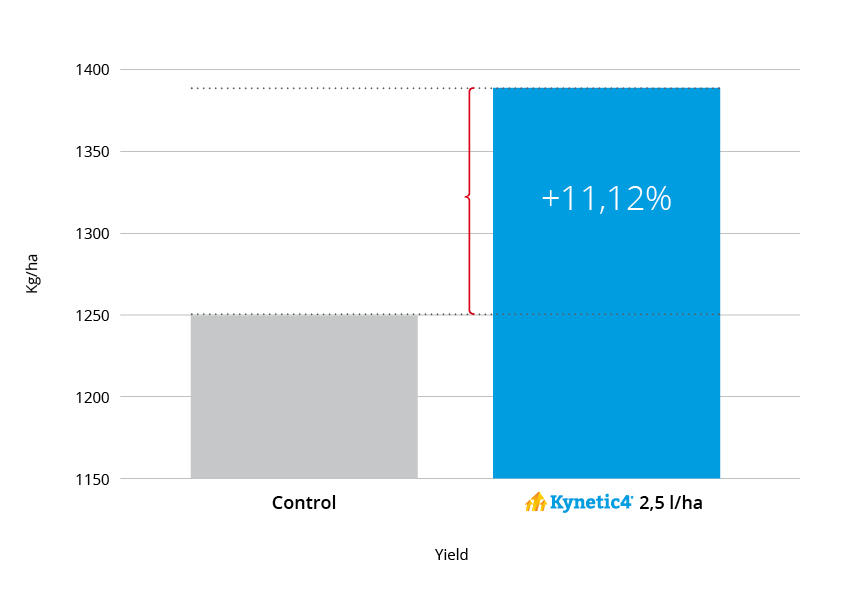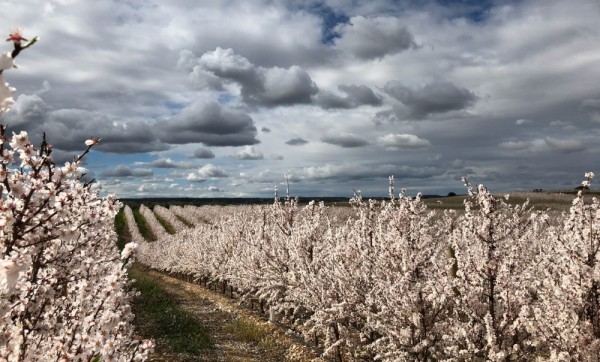Flowering and fruit set in stone and pome fruit trees: treatments to improve quality and increase yields

As winter slowly comes to an end, the agricultural landscape begins to take on new tones and nuances. And one of the most characteristic sights at this time of the year is the stone and pome fruit trees coming into bloom.
Apart from the magnificent spectacle they provide, flowering in peach, apricot, almond, cherry, apple, or pear trees is both a delicate and decisive moment which affects subsequent yields in fruit trees. Bearing in mind the needs and energy requirements of fruit trees at this stage, Seipasa has developed Kynetic4, a solution to simulate and optimise natural flowering and fruit set and to improve the quality of fruits.
After winter dormancy, pome, stone fruit trees and nut trees embark upon a new biological cycle. Sap is reactivated, the tree emerges from its dormant state and new shoots that later give way to the first flowers, start to appear.
Several factors are involved in this process. Climatology plays a significant role in fruit tree flowering. Trees need to accumulate chill hours in order to regulate their vegetative cycle, otherwise flowering could be less abundant or staggered over too long a period.
Outbreaks of frost can also cause the loss of most of the tree’s flowers or indeed recently set fruits, while high temperatures can have the effect of reducing the pollination period or causing flowers to be aborted.
In addition to the accumulation of winter chill hours, fruit tree flowering is also affected by the previous year's fruit load and flowering levels. This is the case, for example, of pome fruit trees. Those that have had abundant flowering in the previous season, or whose branches have not been properly pruned tend to experience poorer quality flowering.
Fruit tree flowering is a gradual process within the plant's cycle of development; however, it takes place in a relatively short period of time. During this phenological stage it is essential to apply biostimulant treatments that boost flowering quality and subsequent fruit set processes, and also help to maintain optimal levels of fruits per tree.
Stimulation of flowering in fruit trees
Kynetic4 is a biostimulant developed by Seipasa to act on 4 key aspects of fruit tree flowering: development of the flowers, pollination, fertilization, and fruit set. Application of Kynetic4 enhances the synthesis of specific proteins at moments when crops undergo an increase in energy demand.
As a flowering biostimulant and intermediary in the chain of physiological processes that occur inside plants during this phase, application of Kynetic4 is recommended from the onset of this process, since this is when major metabolic activity takes place.
Thanks to the metabolic intermediaries in its formulation, Kynetic4 encourages the development of the pollen tube and fruit set: the composition of Kynetic4 provides the energy required for the pollen tube to develop in optimal conditions and consequently enhances the fruit set process.
Increased retention of fruit in cherry trees
Graph 1 shows the results of the Kynetic4 trial in relation to the fruit retention parameter in cherry trees. Two applications were carried out (white bud and 60% open flower), with an interval of 14 days. The results reveal that, compared to the control group, Kynetic4 increased fruit set by 8%, showing that its input of energy provides nutritional efficiency for optimal fruit set.

Graph 1: Fruit set % compared to aborted fruits.
Reduction in flower and fruit abscissions in cherry trees
Monitoring the evolution in the cherry trees, graph 2 shows that application of Kynetic4 resulted in a 7% increase in the number of fruits retained in comparison to the control group, which represents a considerable reduction in flower abscissions and failed fruit set. It is also important not lose sight of the fact that that fruit and vegetable crops require high fruit set percentages to guarantee good yields.
Graph 2: % of fruit retained compared to fruit abscission.
This improvement in fruit set has a direct consequence on increased production levels.
Increase in almond production
Graph 3 shows the result of the trial carried out with almond trees. Two applications were carried out with an interval of 16 days, with an improvement in production levels of more than 11% being seen in the parcel treated with Kynetic4 compared to the control parcel.
Graph 3: Almond tree Kg/ha increase in yield
In the case of almond trees, at the onset of the swollen bud stage, application of Kynetic4 helps improve the quality and fertility of pollen, which is decisive in ensuring optimal fruit set. The pollination process is crucial for the formation of fruit, which means that the number of pollinated flowers needs to be increased to maximise harvest yields.
Another decisive moment for Kynetic4 during almond tree flowering is when the petals start to drop giving rise to fruit set, as intermediate metabolites are involved in the development of the pollen tube and fruit setting.
Blossoming in fruit and nut trees is a striking spectacle of nature. As factors that affect the quality of this process, it is important to consider the use of biostimulant treatments to ensure the necessary input of energy and response to cope with fruit set and fruiting.





